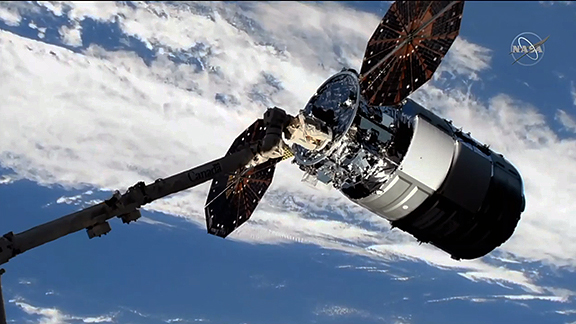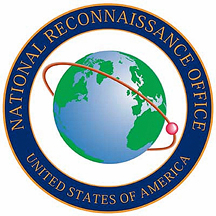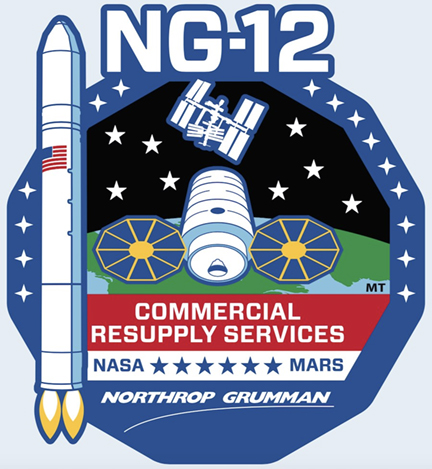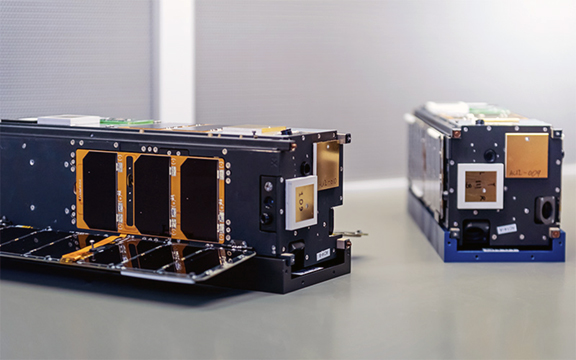
Photo of Northrop Grumman's Cygnus-12 arriving at ISS. Image is courtesy of NASA.

Two National Reconnaissance Office (NRO) research and development cubesats were successfully launched via rideshare aboard an Antares rocket as part of the Northrop Grumman-12 (NG-12) Cygnus cargo resupply mission from NASA Wallops Space Flight Facility, Wallops Island, Virginia, on November 2, 2019.
Led by NRO’s Advanced Systems and Technology (AS&T) directorate, the two cubesats are part of the NRO’s IMPACT project – an R&D effort to provide early evaluation of new technologies in space.
Manifested as AeroCube 14, the two, 3U IMPACT cubesats launched use the Aerospace Corporation’s AeroCube for bus and integration support and host 14 technology demonstrations that range from new materials, such as structural materials and thermal straps, to solar cells, star tracker experiments and on-board processors.

These smallsats will first travel to the International Space Station (ISS) as part of the cargo resupply and will deploy in about two months from the ISS to their final orbit.
To assist with the NRO’s research and development goal of rapid technology infusion, the IMPACT program offers a regular launch cadence for technology demonstrations; provides an adaptable bus that enables easy onboarding and off-boarding of those technologies, and serves as the front end of the technology for NRO future capabilities.

The AeroCube-14 CubeSats in the lab prior to launch integration. Photo is courtesy of Aerospace Corporation.
Four of the experiments that were launched are also part of NRO’s new Greenlighting program, which leverages and evaluates the performance and space survivability of new technologies developed by non-traditional commercial partners in a streamlined fashion on a rapid timeline.
The unclassified Greenlighting program focuses on technology development, not satellite development, by giving vendors supporting NRO’s mission goals the ability to focus on maturation of technologies without having to worry about the logistics of getting to space.
By using a standard circuit board interface on which to host small module technology experiments, the Greenlighting program drives miniaturization of technologies and keeps costs low — all while giving these projects access to space testing that might not be available through traditional means.
Dr. Susan Durham, Director, AS&T, said that with IMPACT, the goal is to take the pioneering research areas being explored to test their survivability and performance in space. The launch of the IMPACT cubesats along with the NRO's new Greenlighting program represents the best of the agency’s collaboration with commercial research and launch partners.

